By Eric Vandenbroeck and
co-workers
Muslim And Hindu, What's The Problem?
In particular, some videos show young Muslim
men being hit by a Hindu mob. And the cops are asking the fallen and beaten
Muslim men to sing the national anthem as they’re being pounded. That is quite
egregious.
But the more
significant evidence thus far is of the police simply looking away and not
responding to Muslim pleas for help as homes, places of worship, and commercial
enterprises were attacked with impunity.
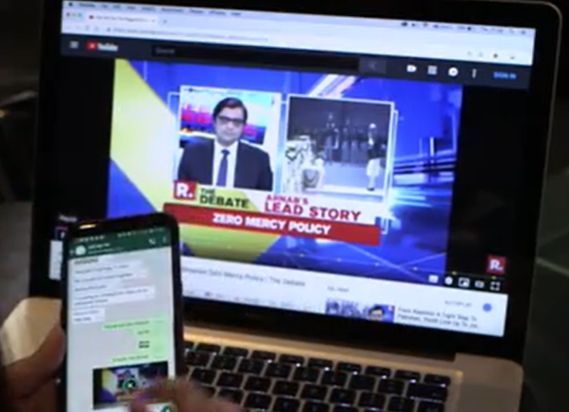
This included that
one reporter was shot and survived, another had his teeth knocked out, and many
more said Hindus
demanded proof of religion and tried to keep them from documenting
vandalism and violence that included people attacking one another with axes,
swords, metal pipes, and guns.
As a result, many of
India’s 200 million Muslims are reckoning with a future as second-class
citizens. In December, the BJP pushed through a new citizenship law that makes
it easier for all of South Asia’s major religions, except Islam, to gain asylum
in India. Shah, Modi’s Home Minster and de-facto deputy, hailed the law as
proof of the BJP’s commitment to helping refugees and said Muslims had nothing
to fear. But taken together with a separate BJP project to combat illegal
immigration, which would require all Indian citizens to prove their residency
with papers many do not have, critics see ominous signs. In Assam, a
northeastern state that has served
as a testing ground for the population register.
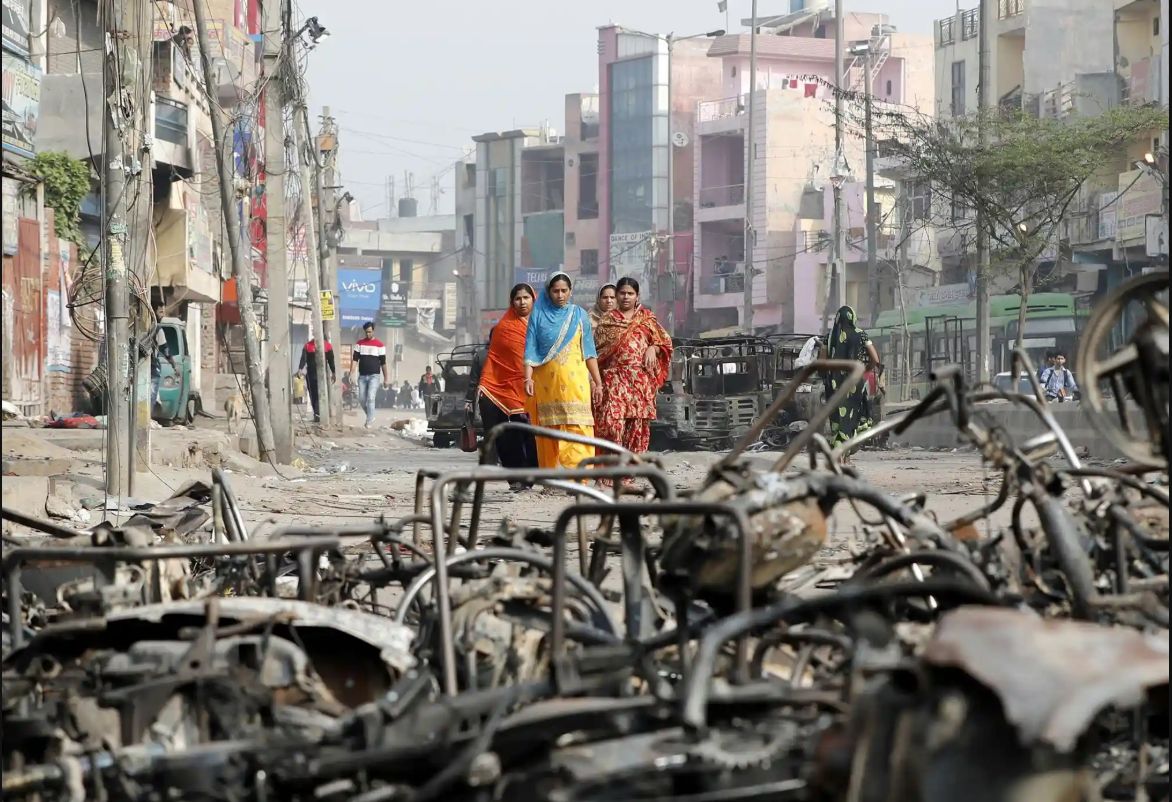
“Jai Shri Ram!” Those
were the words 25-year-old Kapil Gujjar shouted as he pointed his
semi-automatic pistol at hundreds of unarmed women and children at Shaheen
Bagh, a predominantly Muslim colony in New Delhi, on Saturday, Feb. 1. It was a
cool, smog-infused afternoon, and Indians from all walks of life had gathered
in a peaceful protest against a controversial new citizenship law that
especially affects the country’s poor, women,
and, perhaps most of all, Muslims.
Gujjar fired three bullets in the air. The crowd scattered. Later, while being
handcuffed by the police, Gujjar explained his motive: “In
our country, only Hindus will prevail.”
Jai Shri Ram
literally translates as “Victory to Lord Ram,” a popular Hindu deity. But while
this seemingly harmless phrase originated as a pious declaration of devotion in
India, it is today increasingly deployed not only as a Hindu chauvinist slogan
but also as a threat to anyone who dares to challenge Hindu supremacy.
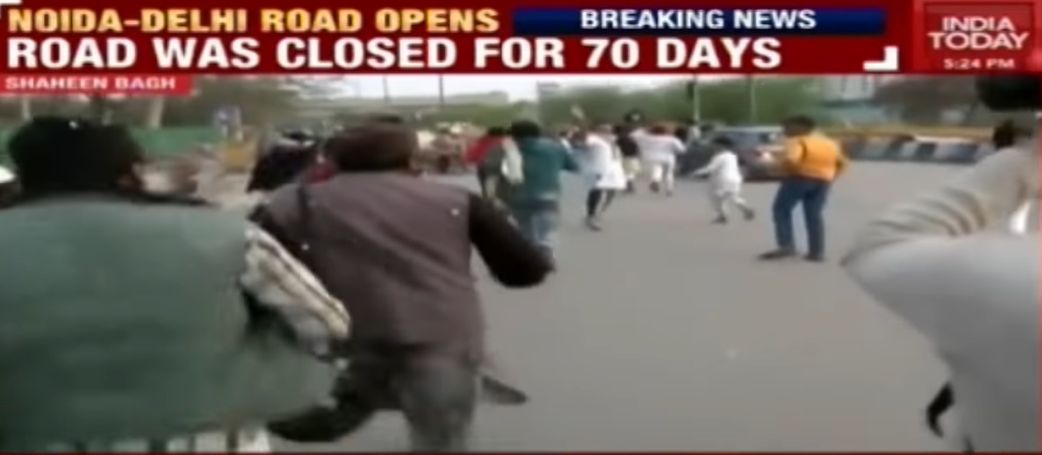
Ever since Narendra Modi was reelected India is
changing. An example were the Shaheen
Bagh protests, to which The Guardian added: 'Modi
is afraid'. Similarly, demonstrations
have spread beyond India.
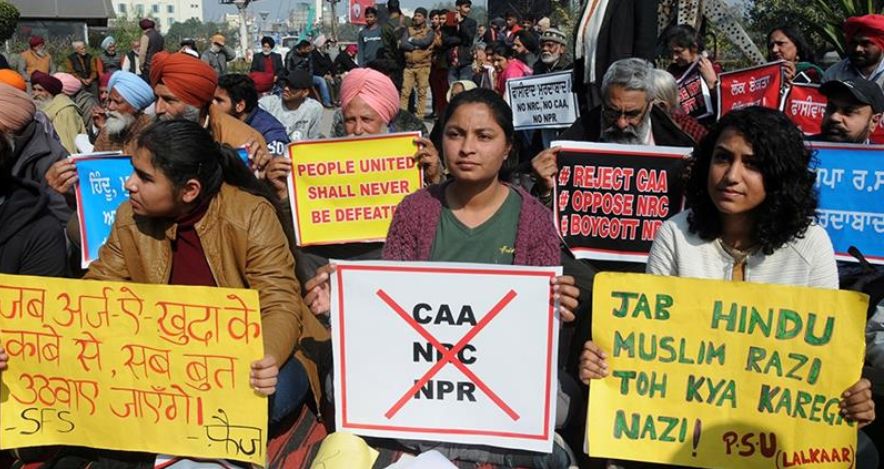
On Tuesday, Prime
Minister Narendra Modi’s Bharatiya Janata Party
suffered a major defeat in elections for the Delhi state legislature. The
election in Delhi was held while India has been witnessing continuous protests
against a citizenship law passed by Mr. Modi’s government in December that makes
religion the basis for citizenship. The new law discriminates against
Muslims and advances the Hindu nationalist agenda of reshaping India into a
majoritarian Hindu nation.
At a Delhi election
rally, Anurag Thakur, Mr. Shah’s colleague and India’s minister of state for
finance, raised
a sinister slogan: “These traitors of the nation! Shoot them!” A few days
later, two Hindu nationalist activists opened fire on students and protesters
at Jamia Millia Islamia and in Shaheen Bagh.
To interpret defeat
of Modi’s party in Delhi with his project of Hindu majoritarianism would be a
grave misreading of the verdict. In a recent survey,
four-fifths of Delhi’s voters favored Mr. Modi and three-fourths of Delhi’s
voters expressed satisfaction with his federal government.
Since its inception,
the Hindu nationalist movement, of which the B.J.P. is the electoral branch,
had a single goal: Hindu supremacy.
Another aspect in
this context of Modi's ideology that I will not expand on any further here has
to do with his belief and conviction of a 'reverse' Aryan migration theory, as
among others mentioned in Blood
nationalism: Why does Hindutva perceive a mortal danger from the Aryan
Migration Theory? And arguing that the so called Vedic culture was
developed by indigenous people of South Asia I earlier
covered here:
The context of what is happening in India.
While India’s Muslims
following the above mentioned New Delhi rally accuse
the police of targeted killings, if nothing else one can safely say that
the Narendra Modi Government’s anti-Muslim citizenship laws, seek to make life
as uncomfortable as possible for the country’s 200 million adherents of the
Islamic faith.
Also, for decades
India's Prime Minister Narendra Modi’s party and its affiliates have struggled
to control one of India’s most fertile ideological recruiting grounds:
university campuses.
That project erupted
in violence last weekend, as masked men and women stormed
the New Delhi campus of Jawaharlal Nehru University, one of India’s premier
liberal institutions.
Witnesses said police
officers stood by as students were attacked with rods and bricks. Some
assailants shouted slogans associated with Modi’s governing party and its parent organization, the Rashtriya
Swayamsevak Sangh, or R.S.S., which for decades has aspired to turn India
into a Hindu nation.
Students and faculty
at the university said freedoms there had eroded since the election of Modi,
whose government has appointed
R.S.S.-affiliated administrators to the university. In the hours after
Sunday’s attack, staunch supporters of Modi’s party called for the university
to be closed.
The current
vilification of supposed ‘foreigners’ fits with the nationalist politics of
India’s ruling Bharatiya Janata Party (BJP), and the
subject of the country’s ‘illegals’ played a prominent part in the campaign for
the May 2019 elections, in which the BJP won nearly two-thirds of seats in
parliament. Addressing crowds in West Bengal in April, the home minister, Amit
Shah, pledged that a BJP government would "pick
up infiltrators one by one and throw them into the Bay of Bengal."
Since coming to power in 2014, the party, aided by the Hindu nationalist Rashtriya
Swayamsevak Sangh (RSS) volunteer organization, which effectively serves as
a shadow state, has kept communal tensions at a steady simmer. At campaign
rallies and in media appearances it has fed a steady stream of rumor into
mainstream discourse.
With the gradual rise
of the BJP, particularly Muslims
are being marginalized politically and pushed out of public institutions
such as the police and the judiciary. Muslims hold just 4 percent of seats in
the outgoing parliament, down from a peak of 9.6 percent in 1980. During Modi’s
first term, expressions of anti-Muslim hatred have grown more common, and
acceptable, in public life.
One symptom of this
is a growing number of lynchings of Muslims
in relation to cows, animals considered sacred by orthodox Hindus. In
September 2015, a Muslim laborer, Mohammad Akhlaq, was murdered by his
neighbors in a village outside New Delhi on suspicion of eating beef.
Afterward, officials seized meat samples from the victim’s home to determine if
it was beef, which extremists argued would be a mitigating factor in his
killing.
Between May 2015 and
December 2018, at least 44 people, 36 of them Muslims, were killed across 12
Indian states. Over that same period, around
280 people were injured in over 100 different incidents across 20 states.
The attacks have been
led by so-called cow protection groups, many claiming to be affiliated to
militant Hindu groups that often have with ties to the BJP. Many Hindus
consider cows to be sacred and these groups have mushroomed all over the
country. Their victims are largely Muslim or from Dalit (formerly known as
“untouchables”) and Adivasi (indigenous) communities.
According to a survey
by New Delhi Television, there was a nearly 500 percent increase in the use of
communally divisive language in speeches by elected leaders, 90 percent of them
from the BJP, between 2014 and 2018, as compared to the five years before the
BJP came to power. Cow protection formed an important theme in a number of
these speeches.
Belonging to an umbrella led by the Rashtriya Swayamsevak Sangh (RSS) underneath supporters of
the Vishva Hindu Parishad:
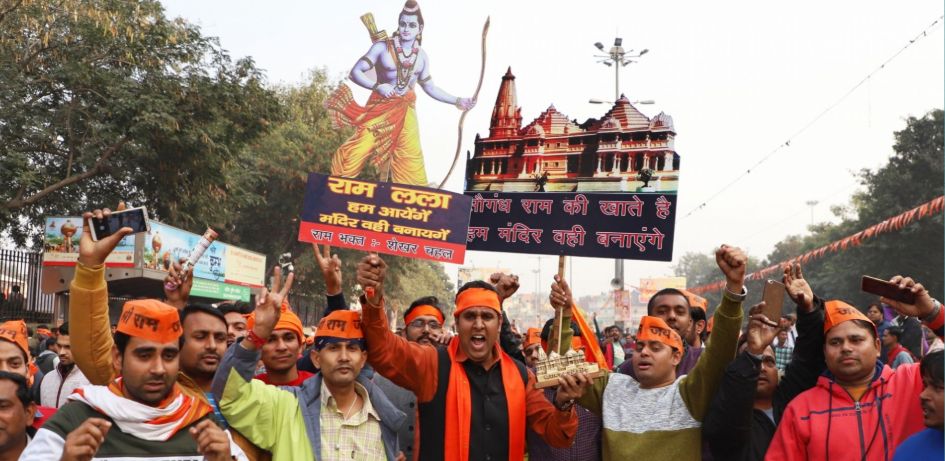
The BJP added a caste
approach to its Hindutva politics. In India, there are several parties whose
main support base is in the lower castes who are oppressed by the higher castes
and who demand some equity (such as reserved places in government jobs and educational
institutions). The BJP launched a demagogic attack on these parties on the
grounds that they have caste-biases, but at the same time appealing to those
castes that the caste-based parties have traditionally ignored.
The BJP also gave
political cover and recognition to brazenly communalist candidates associated
with the RSS and its affiliates, including some accused of terrorism. This was
done in order to valorize Hindu chauvinism and to suggest that violence against
non-Hindus is legitimate. They included one, Pratap Sarangi, who is the former
leader of a hardline right-wing group, the Bajrang Dal. Members of the group
were convicted of the brutal
murder of Australian Christian missionary Graham Staines and his two
children in 1999.
The road to a Hindu only nation
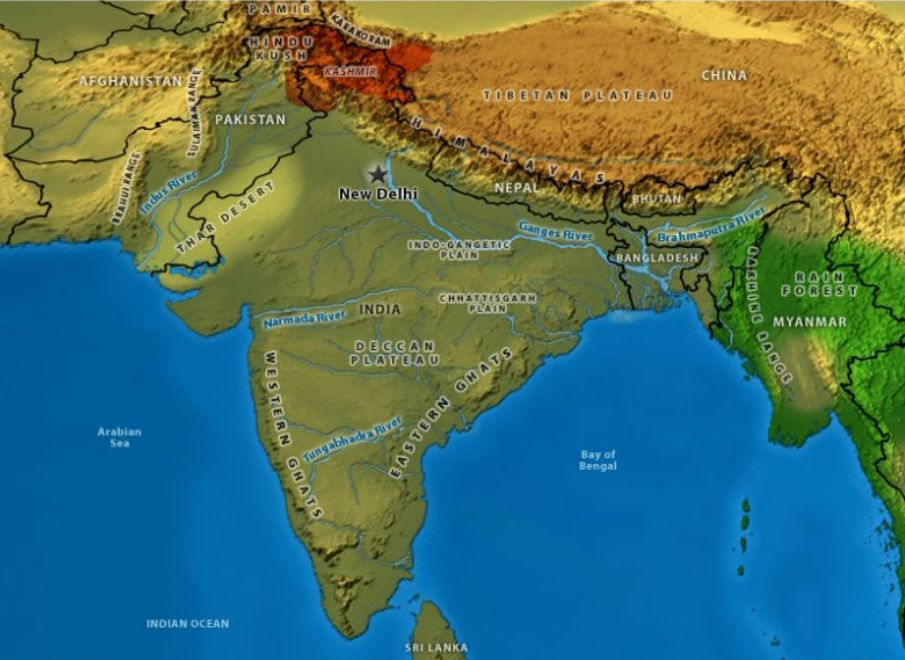
In their conception
of the nation, which was enshrined in India’s liberal constitution adopted in
1950 and set the tone of public life for decades after the end of colonial
rule, India should be a secular state that belongs equally to all members of
its complex multifaith society, whether from the large heterogeneous Hindu
majority or smaller communities that follow the Semitic religions of Islam and
Christianity, which have also flourished for centuries in the subcontinent. But
the militant Hindus who tore down the Babri Masjid, and their powerful
political patrons from the Bharatiya Janata Party
(BJP) and its parent organization the Rashtriya
Swayamsevak Sangh (RSS), saw things differently.
Influenced by
Hindutva, a word that literally means Hindu-ness but has come to stand for the
Hindu nationalist political ideology, they believe that India belongs first and
foremost to Hindus.
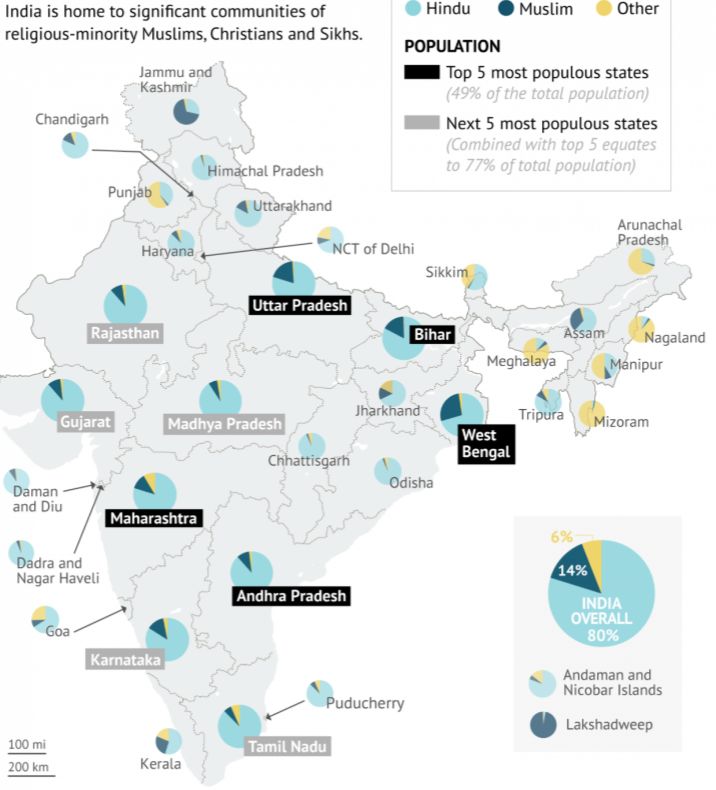
The January 1948
assassination of Mahatma Gandhi by Nathuram Godse, a rightwing Hindu
nationalist who blamed Gandhi for capitulating to Muslim pressure and allowing
the partition of India to create Muslim-majority Pakistan, cast a long shadow
over the RSS, which was briefly banned and struggled for decades to regain
public legitimacy. But today, the debate is once again intensifying, as Prime
Minister Narendra Modi, a dedicated RSS activist
since his youth, won a second five-year mandate from India’s estimated 900
million eligible voters.
And to judge from the
results of the
election, the pluralist idea of India is receding
into the past. At the polls, 44 percent of Hindus, a larger proportion than
ever before, voted for the ruling Bharatiya Janata
Party (BJP), which seeks to transform India into
a Hindu nation. According to public opinion surveys conducted between 2016
and 2018 by researchers at the Centre for the Study of Developing Societies and
Azim Premji University, a majority of Hindus, including those who vote for
other parties, now profess support for some of the BJP’s most important Hindu
nationalist positions. This was also the first Indian election in which no
major political party challenged the BJP’s position that India’s Hindu majority
constitutes a single community that can rightfully claim ownership of the
nation. Today, the basic struggle in Indian politics is not over whether Hindus
and Hinduism should enjoy privileged status but over the precise legal and
constitutional forms that privilege will take.
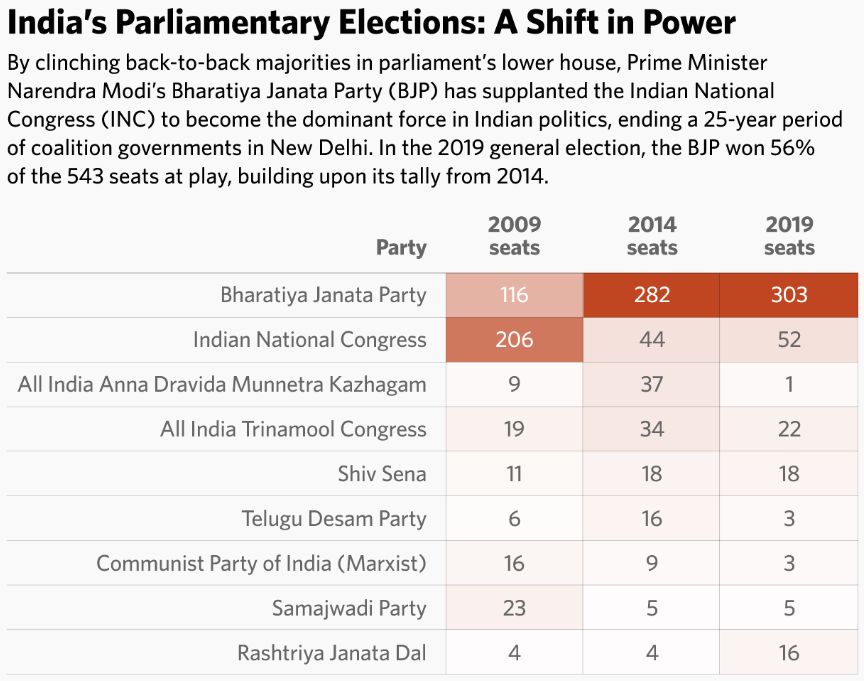
Seeing these developments in the context
In 1997, the
historian Sunil Khilnani described
"the idea of India,” usually attributed to the country’s first prime minister,
Jawaharlal Nehru, as an imagined secular, pluralist, polity that belonged to
all Indians and not to any one group. In particular, India did not belong to
the Hindu majority, which constituted 80 percent of the country’s population
according to the last official census. It was this secular idea that created
India in 1947, not as the Hindu mirror of a Muslim Pakistan, but as the
pluralist opposite of majoritarian nationalism.
Now, things have
changed. With the BJP’s rise to become India’s governing party, the idea of
India is being redefined to mean a Hindu polity. Through acts of violence as
well as words and laws, India is debating not whether the country’s political
system should recognize Hindu identity, but the precise way in which it should
be recognized.
The BJP, which has
for decades called upon the government to recognize the special rights of
Hindus in a Hindu majority country, has been the single most important force in
shifting the terms of the debate.
As a committed RSS man, Modi believes in turning
India into a theocratic Hindu state, where citizenship is defined on the basis
of being a Hindu.
Thus after promises
on the campaign trail, Indian Prime Minister Narendra Modi has come true to his
word, energizing his supporters and exasperating his opponents in equal
measure. On Aug. 5, Modi began a process to revoke
the special autonomous status of the disputed territory of Jammu and Kashmir,
igniting a political firestorm in New Delhi and, potentially, tensions with
nuclear archrival Pakistan. In line with Modi's directive, Indian President Ram
Nath Kovind issued a presidential decree supplanting the Indian Constitution's
Article 370, which grants Jammu and Kashmir autonomy in managing its internal
affairs with the exception of defense, foreign affairs, and communications.
What's more, the decree will also impact Article 35A, which restricts
non-Kashmiris from buying land in the state, potentially opening the way for
non-Kashmiris and Hindus to migrate to the state and alter its Muslim-majority
demographics.
Reflecting its Hindu
nationalism, Uttar Pradesh Chief Minister Yogi Adityanath has renamed
Allahabad, a Hindu holy city bearing a distinctly Muslim name, with the
Hindu-inflected "Prayagarj." He has also
renamed the Faizabad district after one of its towns, Ayodhya, a locality in
which Hindu nationalists have demanded to construct a temple to Ram over the
ruins of the 16th-century Babri Mosque.
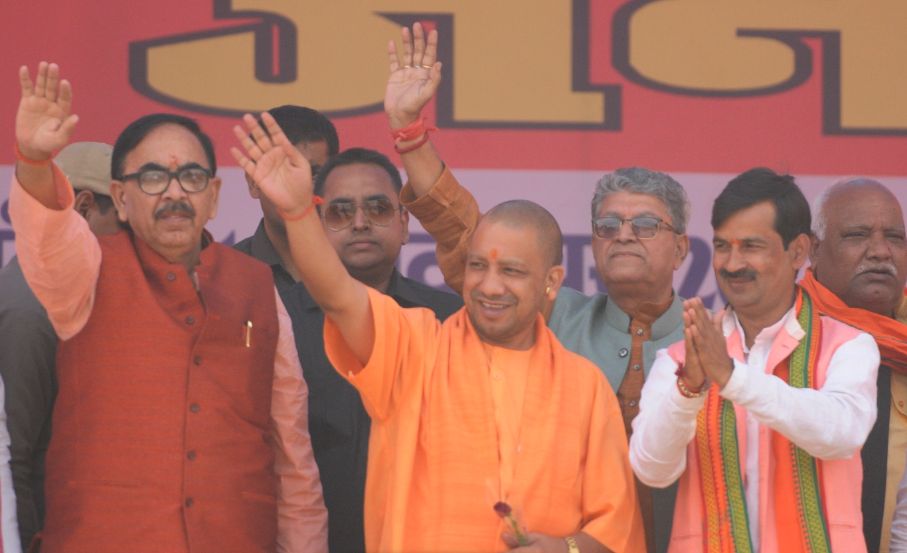
The idea that some
form of Hinduism should be recognized in some way by the Indian state resonates
among both the cosmopolitans and the dispossessed. What is at issue is how it
should be recognized. The BJP is the main political party addressing this concern.
Prominent leaders in the party and its parent organization, the Rashtriya Swayamsevak Sangh (RSS), have offered four
proposals, all of which raise the crucial questions not just of what place
non-Hindus should have in India’s political system, but also of who counts as a
Hindu, and what counts as legitimate Hinduism. The label “Hindu” encompasses a
great range of communities, beliefs, practices, and languages. If Hinduism is
to be recognized by the state, whose Hinduism should it be?
Whose Hinduism?
The first argument on
offer holds that the Indian state should recognize Hinduism as at least
symbolically pre-eminent, while guaranteeing equal rights to all citizens,
including those from the many religious minorities. This first-among-equals
view calls for India to recognize Hindus in a way that is roughly comparable to
the way in which the United States recognizes Christians, for example: by
privileging Christmas as a national and official holiday while not privileging
the rights of Christians as a religious group.
This soft pro-Hindu
view, often found among those who have joined the BJP directly (that is, not by
way of the RSS or its affiliated organizations), challenges the above mentioned
Nehruvian idea of a state equidistant from all religions. That idea is currently
enshrined in law: the Indian state does not privilege Hindu religious holidays.
Government offices closed for the holidays of all major religious groups.
If the
first-among-equals view was to become law, it would not necessarily entail
inequality in legal or material rights and entitlements, but it would leave
non-Hindus lesser owners of their country in a symbolic sense. In addition, it
would place those Hindus who do not follow whichever branch of the religion the
state ended up recognized in the same position. If the state is going to mark
Hindu holidays, for instance, it would have to decide whether to privilege
Diwali (the biggest festival of the year for many north Indian Hindus), Durga
Puja (the major festival of Hindus in West Bengal), Ganesh Chaturthi (for those
in the west of India), or Onam (the major Hindu festival in Kerala). The
pluralist idea of India avoided this problem entirely.
The second argument,
call it majoritarianism, goes further. India, it holds, should adopt laws that
privilege its Hindu majority while giving non-Hindus diminished legal status.
This is the standard position the BJP and many of its leaders have articulated
over the last two decades. If majoritarianism were to prevail, India’s
non-Hindu minorities would become second-class citizens. Many Hindus might
become second-class citizens, as well.
To see this, consider
the BJP’s position that the Indian state should ban the slaughter of cows
because the cow is sacred to Hindus. This idea has assumed a new urgency
following a recent spate of lynchings
of those, as pointed out above mostly often Muslims, accused of killing cows.
Some senior BJP leaders have openly
backed the killings. But as with most beliefs associated with Hinduism,
some Hindus hold cows sacred and others don’t. There are many perfectly
traditional beef-eating Hindus, especially in southern and northeastern India.
It should be no surprise that many of those lynched for cow slaughter have been
Hindus. A rough count conducted by
the Hindustan Times of 50 cases of “cow-terrorism attacks” since 2010 in
which the identity of victims was discernible found that in at least one out of
every four cases, the victim was Hindu, including Dalits (mostly Hindu groups
who were once treated as untouchable). There are also many non-traditional
atheist Hindus who do not hold the cow sacred. A ban on cow slaughter would
discriminate against these Hindus and non-Hindus alike.
According to the
third argument, Hindus constitute not only a religious majority but also a
nation in themselves. This nationalist view has long been the position of the
RSS and of RSS traditionalists within the BJP. It is also the position
reflected in the Citizenship Amendment bill, a proposed law introduced by the
BJP in 2016 and now under consideration by parliament, which seeks to covertly
privilege Hinduism through amendments to India’s citizenship laws. This
position would demand the assimilation of India’s non-Hindu minorities and has
already been by used
by the RSS and its affiliates to justify forcing Muslims to convert to
Hinduism, a process euphemistically termed “ghar
wapsi” or “homecoming.” It would require the assimilation of many
Hindus, too, into whatever interpretation of Hinduism the state espouses.
Hinduism as a nation
The fourth argument
is the most extreme. Its proponents believe that not only should Hinduism form
the basis of the nation but India should be a theocratic state with religious
leadership. The BJP and the RSS are not sympathetic to this view. But in 1964,
as part of an effort to mobilize the Hindu majority, the RSS created the Vishwa Hindu Parishad, or “World Hindu Council,”
whose professed goal is to unite the Hindu clergy on a single ecclesiastical
platform. Although this is not part of the official platform, many in the VHP
espouse a theocratic idea of the Hindu nation and have now developed an
independent popular base. Last year, Modi appointed the religious leader and
VHP member Yogi Adityanath to be the chief minister of Uttar Pradesh, India’s
most populous state. The selection demonstrated the degree of pressure that
this theocratic tendency and its constituency exert on the RSS and BJP.
Nationalism ascendant
Viewed along this
spectrum, Vajpayee, an advocate of the majoritarian view, was no moderate. He
sought to privilege Hindus over other religious groups, in a radical departure
from India’s founding ideology. Only the emergence of even more extreme versions
of Hindu nationalism allowed Vajpayee’s position to come across as
middle-of-the-road.
Take Vajpayee’s
reaction in 1992, when a mob aligned with the BJP destroyed
a sixteenth-century mosque in the town of Ayodhya, in North India. The BJP had
previously campaigned to replace it with a Hindu temple. Unlike some BJP
leaders, Vajpayee was not present at the demolition and apologized in the days
that followed. But he apologized only for the spontaneous and uncontrolled
destruction of the mosque, not for the original position that a temple should
replace the mosque. He had always supported that view and made
a speech saying as much just the day before the mosque was demolished.
Vajpayee’s
“moderation,” such as it was, came from his personality and his love of poetry,
which often overcame his ideology. He had a large heart, a poet’s eloquence,
and a poet’s indiscipline in sticking purely to ideological matters. These
traits helped him build and sustain relationships across ideological lines.
They also allowed him to connect instantly with a crowd. For example he told
stories of the Emergency imposed by Prime Minister Indira Gandhi between 1975
and 1977, during which many opposition leaders were jailed. Vajpayee had been
one of them, and he spoke of undergoing surgery in prison that had permanently
injured his back. “Now,” he said, “I am incapable of genuflection, even if Mrs.
Gandhi were to order me to bow before her.” The crowd roared with laughter.
They liked and respected him. But eloquence and an affable personal style do
not add up to ideological moderation. Vajpayee’s words and actions often
transcended ideology. But when he did take an ideological position, it was
unswervingly majoritarian.
Vajpayee’s lack of
moderation does not mean that there is no moderate way of responding to the
search for a Hindu identity in the symbols of the state. The pluralist idea of
India that Sunil Khilnani wrote about contains the ingredients for such a
moderate response since it offers equal respect not only to India’s non-Hindu
minorities but also to the many different ways of being Hindu. And that
"Constitutional democracy based on universal suffrage did not emerge from
popular pressures for it within Indian society."
But Nehru’s
successors gave up on that pluralist idea long ago. His daughter, Indira,
stoked the anxieties of the Hindu majority in her election campaigns in the
early 1980s. His grandson Rajiv Gandhi courted the Hindu majority by launching
his 1989 election campaign from the town of Ayodhya and calling for “Ram
Rajya,” the rule of Lord Ram. Now, his great-grandson Rahul Gandhi, the current
leader of the Congress Party, has begun to flash his own pro-Hindu credentials.
During regional elections last year, he made
conspicuous visits to temples. In September, in anticipation of the 2019
parliamentary elections, he set
off on a pilgrimage to Mount Kailash in Tibet, which many Hindus consider
to be the home of the deity Shiva. On the way, he tweeted that “Shiva is the
universe,” and published Fitbit data showing each of his steps along the
pilgrimage route, turning what could have been a private visit into a political
spectacle. Days later, the Congress party put up election-related
posters declaring Gandhi a devotee of Shiva. This half-hearted attempt at
beating the BJP at its own game ensures that some form of Hindu majoritarianism
will win in India’s 2019 parliamentary elections, no matter who loses.
Kashmir and the International aspect
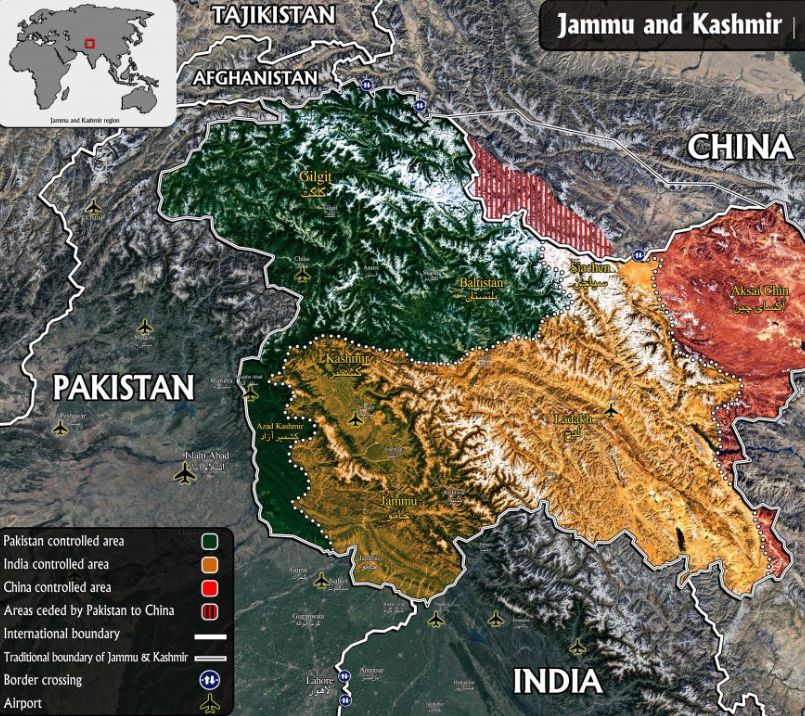
the BJP yoked its
Hindutva agenda to its nationalist (mainly, anti-Pakistan) agenda. The impact
of nationalism and Hindutva peddled separately would be less than when they are
made to work in their mutual interaction. The BJP’s portrayal of Pakistan as the
mortal enemy is related to the perceived loyalty of Indian Muslims to Pakistan:
Pakistan was used as a euphemism for Indian Muslims.
It is also to be
expected that during the rest of 2020,
Narendra Modi will tighten the central government's control over Kashmir by
enforcing a counterinsurgency campaign to keep violence manageable while
encouraging the migration of non-Kashmiri Hindus into the region and drawing
investment from outside the state.
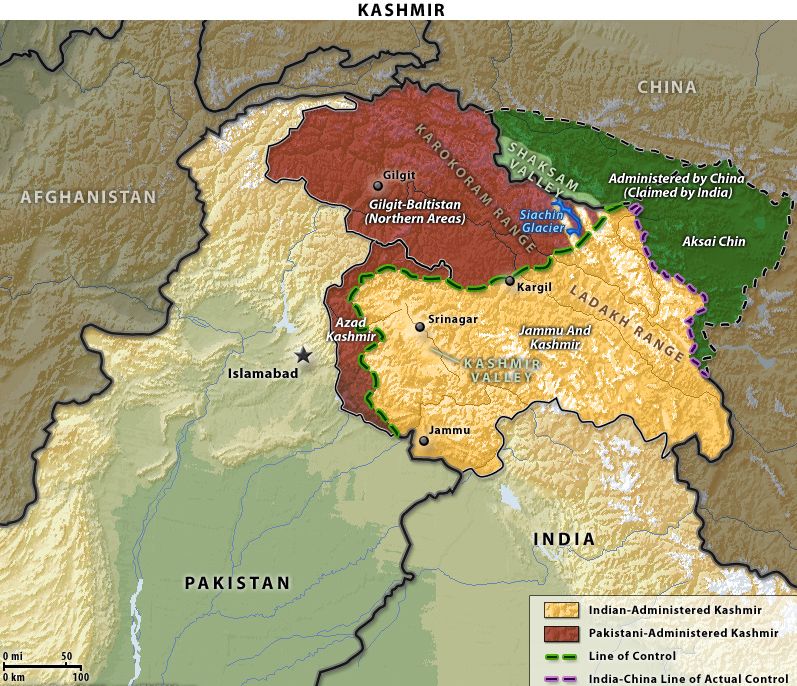
After promises on the
campaign trail, Indian Prime Minister Narendra Modi has come true to his word,
energizing his supporters and exasperating his opponents in equal measure. On
Aug. 5, Modi began a process to revoke the
special autonomous status of the disputed territory of Jammu and Kashmir,
igniting a political firestorm in New Delhi and, potentially, tensions with
nuclear archrival Pakistan. In line with Modi's directive, Indian President Ram
Nath Kovind issued a presidential decree supplanting the Indian Constitution's
Article 370, which grants Jammu and Kashmir autonomy in managing its internal
affairs with the exception of defense, foreign affairs, and communications.
What's more, the decree will also impact Article 35A, which restricts
non-Kashmiris from buying land in the state, potentially opening the way for
non-Kashmiris and Hindus to migrate to the state and alter its Muslim-majority
demographics.
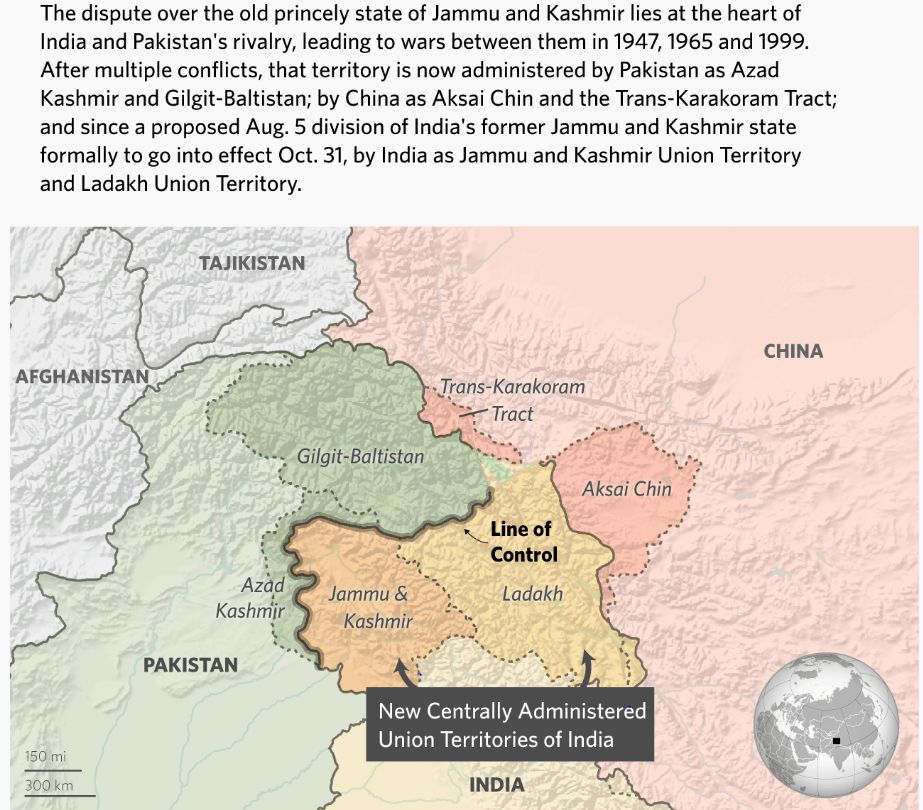
The Kashmir dispute
furthermore contains overlapping domestic and international components.
Domestically, it highlights the tension between the central government in New
Delhi, which is trying to assert its authority over a peripheral state that
harbors a deeply ingrained culture of autonomy that predates independence in
1947. India's only Muslim-majority state, Kashmir's special constitutional
status under Article 370 has always been a point of contention for the BJP,
whose Hindu nationalist base has agitated for the state's greater integration
with the country.
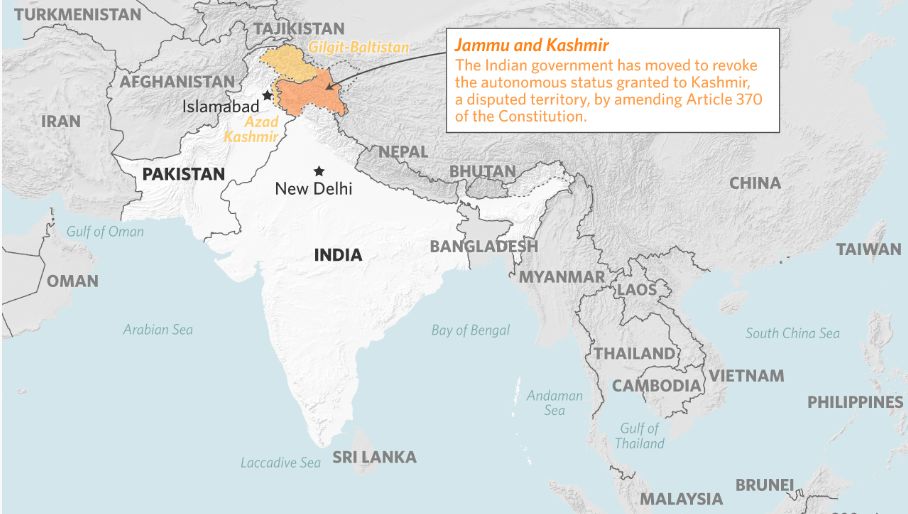
Kashmir thus also
lies at the heart of India and Pakistan's decades-old rivalry. Each country
governs the state in part but claims it in full. Following the independence of
both countries from the United Kingdom in 1947, Kashmir's then-Hindu ruler
ultimately joined India in exchange for military protection against a
Pakistan-backed domestic uprising aimed at wresting control over the state.
What began as a proxy conflict soon morphed into the first of India and
Pakistan's three wars over the territory. Today, Pakistan administers two
regions (Azad Kashmir and Gilgit-Baltistan), India three (Jammu, Ladakh and,
Kashmir) and China two (Aksai Chin and the Trans-Karakoram Tract). Pakistan
claimed Kashmir on the grounds that its Muslim-majority population justified
its inclusion in Pakistan, the homeland for the Muslims of British India.
India, however, argued that a Muslim-majority state was at home in the new
country's secular framework, which sanctioned no official state religion in
spite of the country's Hindu majority. Then there's the strategic aspect of the
countries' conflict over Kashmir, as the territory, which borders China,
Pakistan-administered Kashmir and Punjab provides the Indian Armed Forces with
a critical staging ground in any potential conflict
against China or Pakistan, India's two most serious rivals. At the same
time, Kashmir also has added importance for Pakistan, as the country's key
waterways, run through the state.
For people today who forget
that ‘map is not the territory’, it is easy to see why Kashmir is typically
understood as a territorial dispute between two belligerent neighbors in South
Asia.
Jammu and Kashmir is
a former princely state partitioned since 1949, yet still regarded as a
homogeneous entity. India and Pakistan control almost half of its territory a
small portion is occupied by China), with both claiming jurisdiction over the
whole. The line of demarcation is called the Line of Control. Nevertheless,
developments in the Pakistani part (made up of Azad Kashmir and the Northern
Areas) simply do not figure in the debates on Kashmir, while stories of
Kashmiris seeking to break away from the part administered by India distort
reality by overlooking the region's complexities. The political construct of a
Muslim-majority Jammu and Kashmir state pitted against a majoritarian Hindu
India-or of an Islamic bond cementing the relationship between Azad Kashmir and
the Northern Areas with Pakistan-is, at best, misleading.
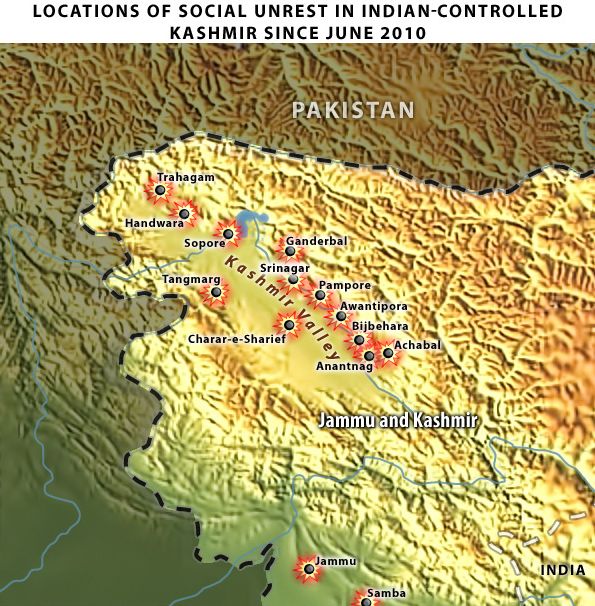
Since 1989, the state
has witnessed an insurgency tacitly backed by Pakistan that seeks to separate
Kashmir from the union. In February, a militant belonging to one such
Pakistan-based group, Jaish-e-Mohammad, rammed a truck packed with explosives
into an Indian security convoy, killing 44. That attack prompted India to
retaliate against Pakistan by sending warplanes into undisputed Pakistani
territory to hit a militant training camp, a shift in India's military strategy
that involves striking deeper into Pakistan territory, both to exploit gaps in
its air defense and to heighten the costs for Islamabad with the aim of
deterring future cross-border attacks. Pakistan responded with its own
airstrikes the next day. Pakistani Prime Minister Imran Khan's release of a
captured Indian pilot gave both countries an off-ramp, but the BJP used the
incident to prioritize national security in the run-up to the general elections
that began in April. Khan, who chaired a National Security Council meeting over
the weekend prior to the 5 Aug. announcement, has called the Modi government's
decision "illegal," while the Pakistani National Assembly will hold a
joint session of parliament on 6 Aug., though this was a largely symbolic
gesture aimed at drawing attention to the Indian announcement.
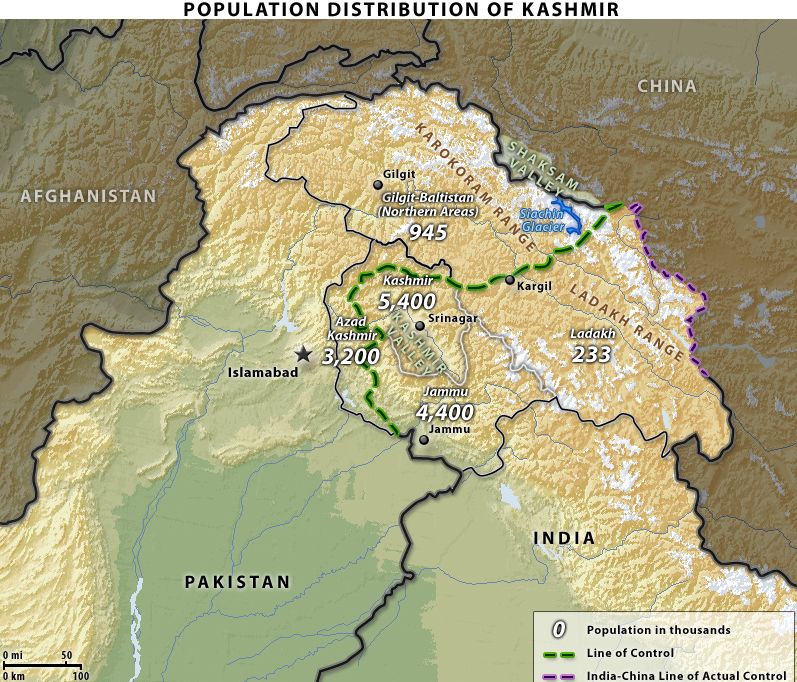
Going forward, a
variety of factors are likely to be in play, including possible troop movements
and new cease-fire violations between the Indian and Pakistani militaries along
the Line of Control, the de facto border separating the region. The great powers,
too, might take an interest in the issue. U.S. President Trump has already
offered twice to mediate on Kashmir while China could also become involved
given that it is Pakistan's strongest ally, but also a country that wants to
maintain calm relations with India. Of perhaps greatest concern, however, is
the question of how Kashmir's militants will respond to the decision. If New
Delhi experiences another attack that it blames on militants from over the
border, has recently accused Islamabad of disrupting the peace by laying
landmines to target Hindu pilgrims, it could call for an even more forceful
response against Pakistan. That, naturally, would bring the subcontinent's
nuclear-armed rivals closer to the edge of a conflict that would reverberate
far beyond disputed Kashmir.
The BJP-led
government's attempt to bring Kashmir closer into the fold ultimately fits into
its broader project to solidify the political and economic unity of India, a
country of 1.3 billion people whose immense linguistic, cultural and
demographic diversity has meant its states resemble countries in their own
right. Nevertheless, legal challenges, possibly involving the Supreme Court,
could yet hamper the government's efforts in Kashmir, while opposition
politicians will seize on the opportunity to chastise the government on
amending the constitution without encouraging a democratic debate.
Foreign policy going forward
Finally India's fears
of Chinese strategic encirclement will accelerate its investment and defense
overtures to neighboring countries in South Asia, marking a central plank of
Modi's foreign policy in 2020. However, Beijing's funding advantages over New Delhi
and its willingness to renegotiate debt with Sri Lanka and the Maldives explain
why its political and economic relationships with these countries, as well as
with Nepal and Bangladesh , will only grow, particularly as the countries wish
to diversify their foreign relations beyond India, the regional hegemon.
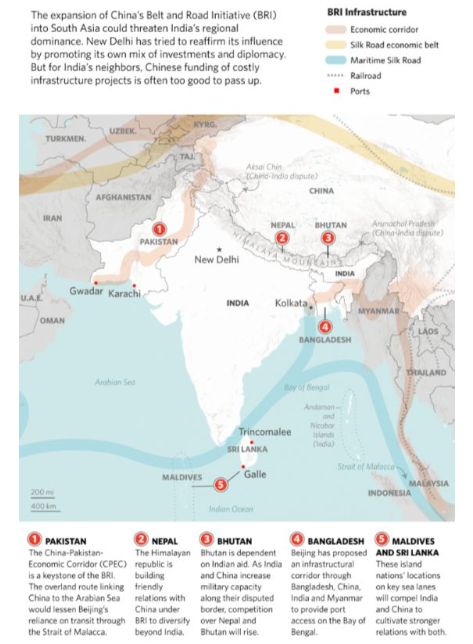
For updates click homepage here